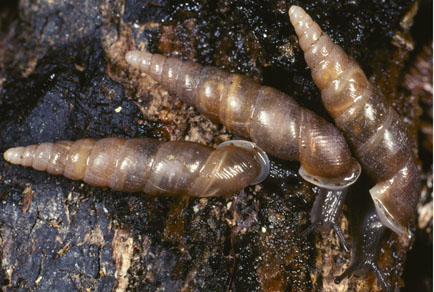Abstract
Species that develop in left-right polarity reversal have repeatedly evolved in gastropods, uniquely among metazoans. To clarify mechanisms underlying the evolution of whole-body reversal, it is essential to understand the genetic variability of developmental polarity. Here we show experimental evidence for the maternal inheritance of racemism, in which both dextral and sinistral siblings are produced in the same broods, in the ovoviviparous land snail Hemizaptyx stimpsoni. In contrast to the traditionally known variation in left-right polarity that is determined by the dichotomous dextral and sinistral alleles, we found that a recessive allele at a nuclear locus is responsible for the present racemism. This genetic basis allowed us to estimate the frequency of the enantiomorphy allele to be 0.2 to 0.3 in the population where we found dextral variants. The ratio between dextral and sinistral siblings was close to 0.5 in total mean but bimodally distributed among maternal parents. The overall proportions of morphs changed across generations suggesting the operation of additional genetic factors. There was no detectable difference in the reproductive success of interchiral and intrachiral mating pairs. This suggests that positive frequency-dependent selection in high-spired snails may not necessarily be as strong as that known in the chirally-dimorphic Partula suturalis.

